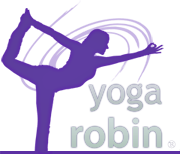Spine health
Spongy intervertebral discs separate each skeletal vertebrae with softness and flexibility to absorb shocks and permit flexibility. Excessive strain can cause a bulge (herniated disc) as I experienced. Another contributor is age when gel-like substance in these discs starts to diminish and thereby flatten the disc. Over time, this can be a degenerative issue (hence old age shortening in height).
Invertebral discs need hydration
How to keep these discs as hydrated and young as possible? As we age, the amount of water in our bodies decreases. Disc dehydration is a direct result of a dramatic decrease in circulating proteoglycan molecules that hold water in the discs. Causes of this loss are nutritionally-based.
Since the discs are avascular (no blood supply), how do the discs get nutrients? Their source is in the adjacent blood capillary beds, where nutrients diffuse through to the disc. If the blood vessels are damaged or there is a blockage, the nutrient supply gets cut off, resulting in disc dehydration. To me, this points to the culprit being too much pressure on the spine.
Elogate the spine daily
Good spine health includes keeping the spine as elongated as possible, repeatedly, which is less pressure on discs. This is part of my daily yoga effect. Practicing good posture while sitting and standing, not only in yoga, also helps. Strengthening the supporting neck, shoulder and back muscles will help to give the spine extra support. Especially during a Headstand (sirsasana), it’s important to set up the base of the shoulders and upper back to support the body so that all pressure doesn’t go to the neck, and also to continue to elongate the spine by extending the legs upward.
Inversions stimulate Nervous and Lymphatic systems
When set up properly, you gain the benefits of Headstand—from healing, to balance, to the physical and subtle body. Headstands specifically reverse the pull of gravity on the organs, reverse the blood flow to stimulate the Nervous System, rejuvenate the lower body as de-oxygenated blood flows more easily to extremities, stimulating the Lymphatic System to remove toxins and improve cognitive abilities.
Headstand also strengthens neck muscles. Too little pressure will also dehydrate the disc, so it’s important to use your spine!
 disc dehydration,
disc dehydration,  headstands,
headstands,  spine health,
spine health,  vertebrae
vertebrae 
